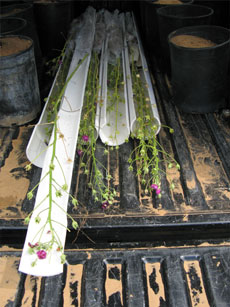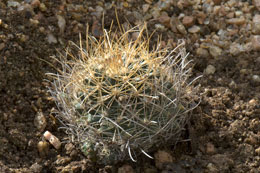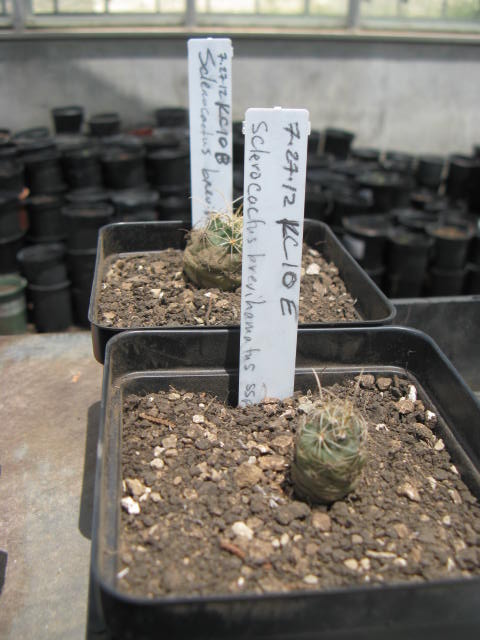Room to Grow
WITH MORE THAN 268,000 SQUARE MILES to call home, Texans have a lot of land in which to roam. Only Alaska trumps the Lone Star State when it comes to size. And in terms of diversity, the mountain ranges, coastal prairies, pine woodlands and eight other ecoregions that form a patchwork across Texas make it second just to California in terms of rich native landscapes.
But in an increasingly urbanized world where habitat loss, climate change and other challenges loom, the “Everything’s Bigger in Texas” mantra takes on new meaning. When it comes to diversity, Texas is among nine southern states that share the dubious honor of hosting nearly 90 percent of the endangered species in the United States.
Conservation work is an integral part of the mission of the Lady Bird Johnson Wildflower Center, which works with state and federal partners to preserve native plants and the unique landscapes that sustain them. The goal is to ensure a high quality of life that includes holding onto this essential part of Texans’ shared cultural heritage.
“When we take actions to preserve an endangered species, we are also taking actions to preserve ourselves,” says Dr. Karen Clary, manager of the Wildflower Center’s plant conservation programs.
Take the Texas poppy-mallow and the Tobusch fishhook cactus, for example. These two federally endangered plant species recently faced threats because of land development in some of their Texas habitat. The Texas poppy-mallow resides in an ancient Colorado River sand deposit and the Tobusch fishhook cactus is found in only eight counties on the Edwards Plateau, so relocating the plants called for unique expertise.
In rescue projects for both plants, conservation staff from the Lady Bird Johnson Wildflower Center and a team of colleagues carefully collected the at-risk populations. The team followed a labor-intensive protocol of gathering nearby soil, delicately extricating roots, collecting seeds and more, while salvaging the populations as quickly as possible.

Texas poppy-mallows resting in their PVC cradles. PHOTO Cullen Hanks, Texas Parks & Wildlife
All plants, including endangered plants, are the underpinning of life on Earth. They provide all the oxygen we breathe and are the first building block in the food chain,” Clary explains. “We wouldn’t survive if it weren’t for plants.”
For the Texas poppy-mallow rescue in summer 2010, the team spent two dawn to dusk days in 90-degree heat on rolling plains near Ballinger. They dug up the flowers’ deep roots from the river-deposited sands and transferred the 54 plants in PVC pipe “cradles” because the taproots were so long. The population of Texas poppy-mallows made it to the Wildflower Center without one plant being lost, thanks to the team’s skillfulness.
The poppy-mallow rescue would not have been possible without the cooperation of the landowners who, in anticipation of new construction on their property, contacted the Texas Parks and Wildlife Department (TPWD) and researchers at Angelo State University (ASU). That’s when TPWD Botanist Jackie Poole and ASU Botanist Dr. Bonnie Amos enlisted the Wildflower Center to help rescue and house the plants. After two years of fostering the plants, Wildflower Center conservation staff reintroduced them to an experimental population in Colorado City, Texas, maintained by Amos.
And what about the prickly Tobusch fishhook cactus? The team collaborated with developers and the U.S. Fish and Wildlife Service to steward two populations of the cacti salvaged from a transmission line project and a pipeline project. Biologists working for the developers carefully removed each of the 140 cacti in the path of construction and brought them to the Wildflower Center in late summer 2012.
Clary hopes to find a location to reintroduce the plants by fall 2013. Meanwhile, conservation staff are monitoring the rescued plant’s growth, pollination and fruiting habits to help with future management of the species. The cacti bloomed on site in March, for instance, which presented staff with a unique opportunity to collect fertility data on the bright-yellow-to-cream flowers they produce.
Lone Star, Abundant Land
Unfortunately, the Texas poppy-mallow and Tobusch fishhook cactus are just two examples of imperiled native plants. In Texas, more than 200 species are at risk and 28 of those species are listed as threatened or endangered. Losing these species would be a blow to Texans’ natural heritage, says Wildflower Center Plant Conservationist Minnette Marr.

Two populations of Tobusch fishhook cactus were rescued from a land development project. PHOTO Joseph A. Marcus
Furthermore, plant biodiversity—the range of organisms in an ecological system—is the foundation of healthy environments and thriving communities. From breakfast cereal to fossil fuels to all kinds of medicine, plants provide essential resources. That’s one of the reasons why the Wildflower Center works so hard to protect and preserve native species.
“Our mission, Lady Bird’s mission, is to conserve native plants and the landscapes that sustain them,” Clary reiterates. “Endangered species are the rarest of the rare. In that regard, it’s really important to try to keep them around.”
“As a nation, we have committed to protecting these species through the Endangered Species Act,” Clary adds. “Throughout the country, each state tries to do its part to keep species from going extinct.”
Along with activities such as monitoring invasive species, administering $637,858 in endangered species conservation grants, educating the public and more, the conservation program collects and banks seeds for future research and restoration projects. The Wildflower Center also partners with the Center for Plant Conservation (CPC), and 38 other botanical institutions in the U.S. to conduct research on rare and endangered plants species.
In fact, the Wildflower Center is the CPC’s designated caretaker for the Texas poppy-mallow. During the two year stay at the Wildflower Center, staff and trained volunteers collected 4,998 seeds to store in the Center’s seed bank, along with 1,730 seeds collected at the rescue site. These conservation efforts would not be possible without the support of the nursery staff of the Wildflower Center, says Marr.
“There are not very many known populations of Texas poppy-mallow and this was an opportunity to collect seeds from a population we had never collected from before,” Marr says.
Seed banking is an important part of keeping endangered plants around for generations to come. Back-up seeds can be used to re-vegetate areas if a population is destroyed. Because conservation of seeds is more efficient than saving entire plants, the Wildflower Center currently preserves seeds of more than 600 Texas native species in its seed bank.

Tobusch fishhook cactus in the Wildflower Center nursery. PHOTO Karen Clary
Crossroad: Decisions to Steward
Saltwater damage in Houston’s coastal prairies after Hurricane Katrina and the recent drought offer illustrations of the challenges that native species have when it comes to thriving in Texas. To address the needs of natural habitats in times like these, a little dose of Texan pride comes in handy as residents take action to protect their homeland.
Watering schedules, controlling run-off, managing personal usage – there are ways to alter lifestyles to ensure the water supply doesn’t dwindle to a dangerous level.
“Many of our rare species are at risk because of the drought. Well, we’re compromised as well because of the drought,” Clary explains. “So if we set about conserving water, we’re not just helping ourselves, we’re helping the species. And that’s a win-win.”
Planting native plants, which are drought tolerant, is one of the best ways for homeowners to cut down on water use, says Clary. According to the U.S. Environmental Protection Agency, a household’s outdoor water use can be as high as 60 percent in dry climates such as the Southwest. Just as citizens can conserve water to help out in a drought, they can take action to preserve healthy ecosystems during environmental crisis. Along with learning to identify endangered or rare native plants to avoid doing them harm, citizens can avoid buying and growing non-native, invasive plant species that compete with natives for resources.
The well-being of native plants is one way to measure the overall health of the environment. Thus, the extinction of native species serves as an early warning of disruption to natural ecosystems.
“They’re like the little canary in the coal mine,” Clary says, describing endangered species. “If they go, it’s just a matter of time before other things start to go.”
Written by Kimberly Atkins

